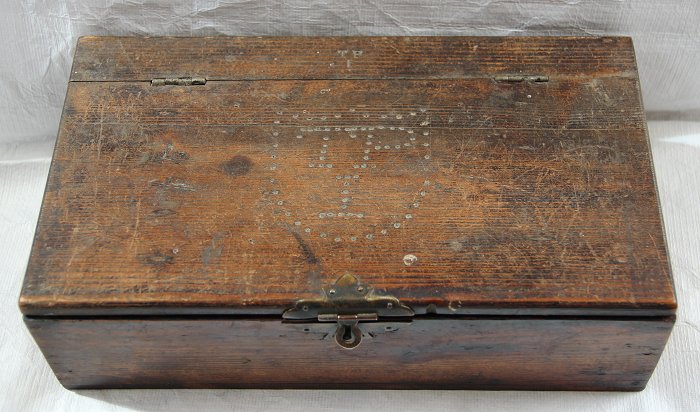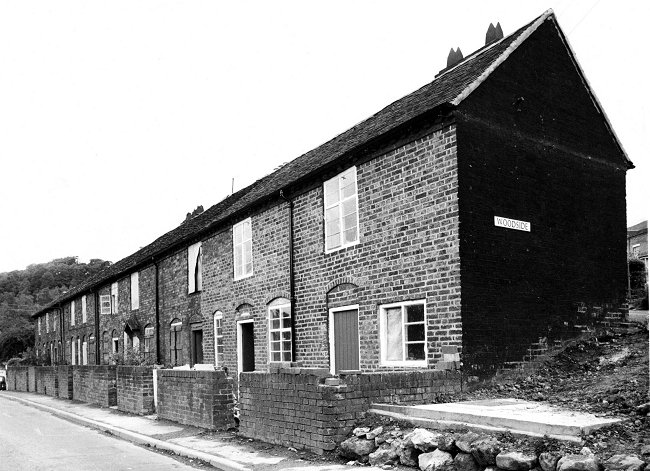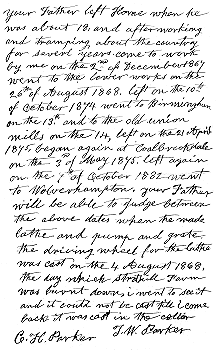
A letter from T. W. Parker that was sent
to his grandson, Charles Parker. Courtesy of Peter Parker. |
A transcript of the letter
on the left, that was written by Thomas Wheatley Parker, and
sent to his grandson Charles Parker, in June 1889. It describes
Thomas Parker’s early career: Your
father left home when he was about 18, and after working and
tramping about the country for several years, came to work by me
on the 2nd
December 1867. Went to the lower works on the 26th August
1868, left on the 10th October, 1874, went to Birmingham on the
13th and to the old Union Mills
on the 14th. Left on the 21st
April, 1875, began again at Coalbrookdale on 3rd May 1875,
left on 7th October, 1882, went to Wolverhampton. Your father
will be able to judge between the above dates, when he made the
lathe and pump and grate. The driving wheel for the lathe was
cast on the 4th
August, 1868, the day on which Strethill Farm was burnt down.
I went to see it, and it could not be cast ‘till I came back. It
was cast in the cellar.
Signed T. W. Parker |
|
By 1875 the family had moved to "The Laurels", which was nearer
to the Coalbrookdale Company's offices and Alfred and Annie were
born there.
At the
time, the Coalbrookdale Company where producing elaborate
stoves and fireplaces, domestic ironware and a rapidly
increasing range of rainwater and soil goods, such as
gutters, drainpipes and gratings.
The company also produced
high pressure pumping engines, and in response to this,
Thomas, in collaboration with Philip Weston, invented the
Parker and Weston Patent Steam Pump in 1876.
This was Thomas's first major invention, which was manufactured
exclusively by the Coalbrookdale Company and sold throughout
the world. Philip Weston was a machinist at the works and he
and Thomas took out two patents for the pump. By
1881, Philip Weston, who was 52 years old and lived at Woodside,
Madeley, had become manager of the iron foundry.
Eight years later they were presented with a medal for the
invention, at the Inventions Exhibition in London. This was
the first of Thomas’s many inventions to receive any
recognition and he attributed this presentation as his real
start in life.
|
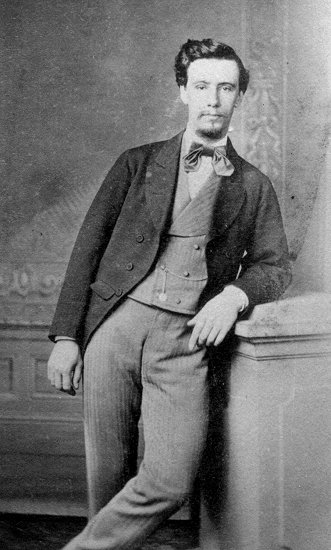
Thomas, on his return to Coalbrookdale.
Courtesy of Gail Tudor. |
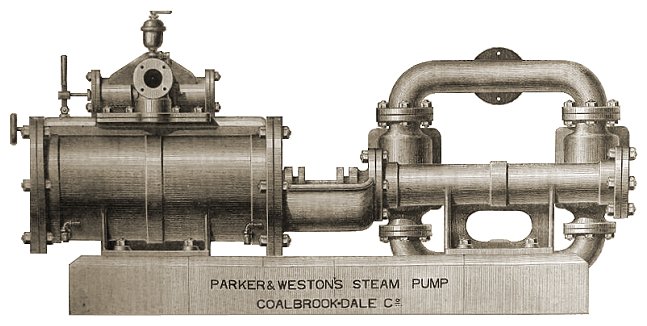
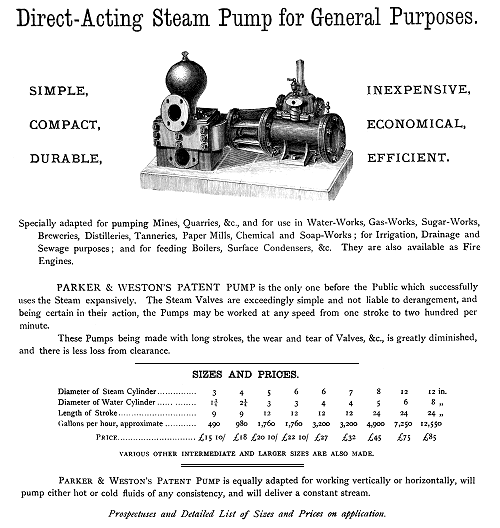
Courtesy of the library and archives of the Ironbridge Gorge Museum, Coalbrookdale.
| |
|
Read a detailed description of
the
Parker and Weston steam pump
from 'Engineering' magazine |
 |
| |
|
The valve arrangements in the Parker & Weston pump
were used in all of the Coalbrookdale Company's pumps in
1878, as can be seen from the small section of an
article that follows. This is part of a series of articles
in 'The Engineer' describing some of the exhibits at the
1878 Paris Exhibition:
|
The Engineer,
19th July, 1878. The Paris
Exhibition
Direct-acting steam pumps are
exhibited by several makers, the
Coalbrookdale Company making a
good show of different sizes of
ram and plunger pumps, some
fitted with a condenser and
others with an arrangement of
adjustable cataract, by which
the pump may be made to work
exclusively through any desired
range above half stroke….
….The company exhibited some of
their pumps in action pumping
tar, and capable of pumping
pottery slip or slurry; and a
direct acting blowing engine for
forges, cupolas, and for
ventilating. This consists
simply of the steam cylinder of
the direct-acting steam pump
with the pumping cylinder
replaced by a blowing cylinder,
surmounted by a large air
vessel. This, like all the pumps
exhibited, is fitted with
Messrs. Parker and Weston's
patent direct-acting pump valve
arrangements. |
|
|
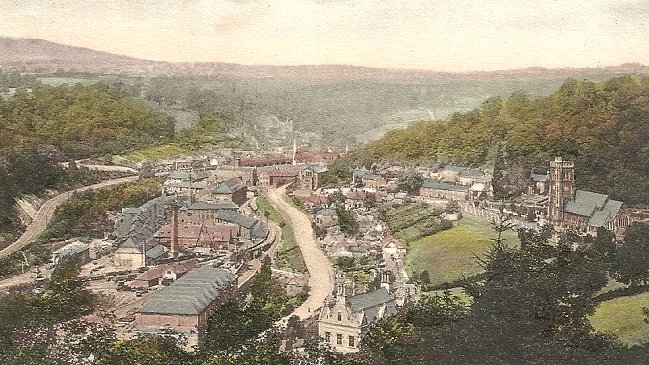
Coalbrookdale in Thomas's time. From an old
postcard.

The patent grant and the seal for the
Parker Weston steam pump. Courtesy of the library and archives
of the Ironbridge Gorge Museum, at Coalbrookdale. |
In about 1878 he designed and built a large dynamo for the firm's electro-plating department. The art casting
department at the works used electro-deposition of bronze and
copper finishes on a large scale.
The electricity previously
came from huge battery cells, which would have needed a lot of
maintenance and only supplied a limited amount of power.
This must have been one of the first dynamos in
the country to be put to a practical use, and one the first to
be used for this purpose
in the world.
The Coalbrookdale Company turned its attention to smoke
abatement and introduced the Iron Bridge series of grates.
Thomas also considered the problem and invented the "Kyrle" open
grate, which was the first open grate in which
anthracite coal could be burned.
|
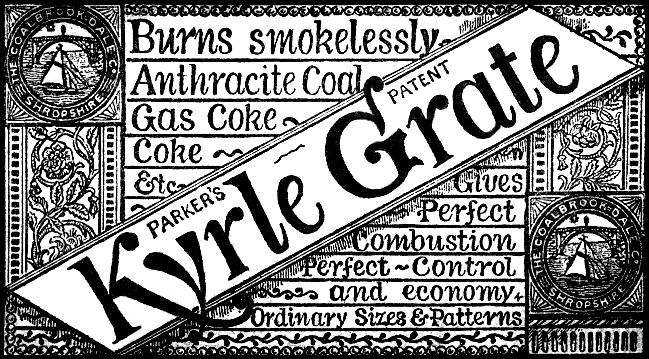
An advert for Thomas Parker's "Kyrle"
grate. It was manufactured by the Coalbrookdale Company.
Courtesy of Peter Parker. |
| The "Kyrle" grate was probably named after John Kyrle,
an English philanthropist who lived in Ross-on-Wye, and
devoted his life, and his wealth, to the greater good of the
community, and the local area. At the time when the grate
was developed, the Kyrle Society, founded in 1876 was making
a name for itself by bettering the life of working people,
and encouraging the development of parks, and gardens. The grate was added to the Coalbrookdale
Company's list of products, and in
1881, after official testing by the Smoke Abatement Committee
of the International Smoke Abatement Exhibition, at South
Kensington, he was awarded the Exhibition's Silver Medal.
At about the same time he invented a gas engine, known as
“Robinson’s”. It was made by Tangye Brothers of Birmingham. |
|
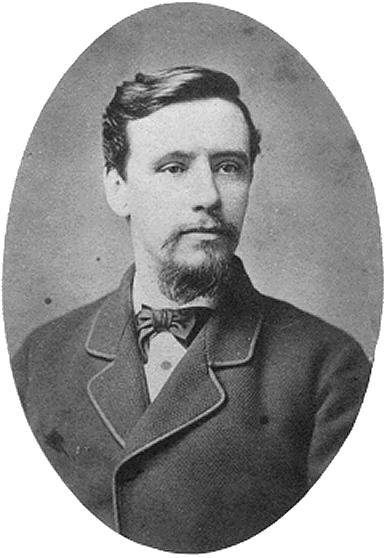
Thomas at the age of 32.
Courtesy of Gail Tudor. |
In 1859 the lead-acid cell was invented by
the French scientist, Raimond Louis Gaston
Planté. Thomas began to make his own accumulators, as the cells
were called, and began to cooperate with Paul Bedford Elwell,
who ran the Patent Tip and Horseshoe Company in Wolverhampton.
This work led to a patent being taken out in 1882, by Thomas
Parker, in conjunction with Paul Bedford Elwell, for an
improvement to Planté’s original design, which greatly increased
the capacity of the cell. In their process the lead plates for
the battery were first put in a bath of dilute nitric acid and
sulphuric acid, and left there for 24 hours. The effect of the
bath was to minutely honeycomb the lead plates to form what was
called "spongy lead".
This greatly increased the surface area of
the plates and hence the capacity of the battery. A deposit of
lead sulphate also formed on the surface, which was subsequently
reduced to peroxide, and part of this was washed off before use.
Strangely enough, M. Planté, the original inventor, applied for
a patent for the same process on the same day, and ultimately
two separate patents were granted to the rival claimants, by the
Solicitor-General. Elwell and Parker later purchased M. Planté's
interest in the process.
|
|
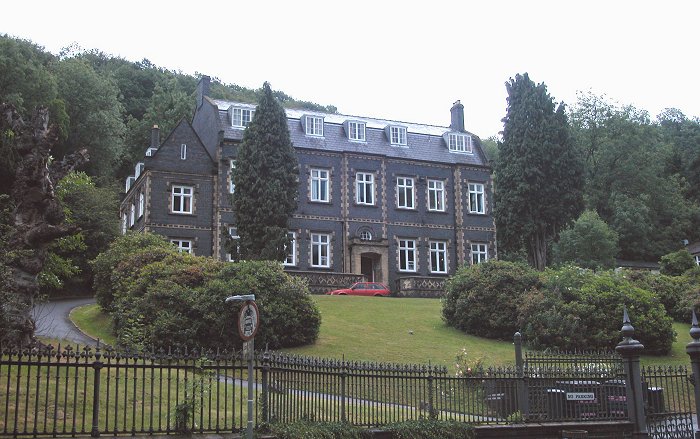
The Coalbrookdale Institution. As it is
today. |
|
Thomas took out several patents for improvements to alternators,
and in 1881 was involved in the electric tramway at Portrush, in
Northern Ireland. This was the first electric tramway in the
world to be powered by hydro electricity.
Thomas was very interested in politics and became an
enthusiastic supporter of the Liberal cause. This was possibly
because of his upbringing in Coalbrookdale where the Darby
family were staunch Liberals. Thomas joined the Liberal Party
and became a member of the Executive Committee of the Borough of
Wenlock Liberal Association.
|
|
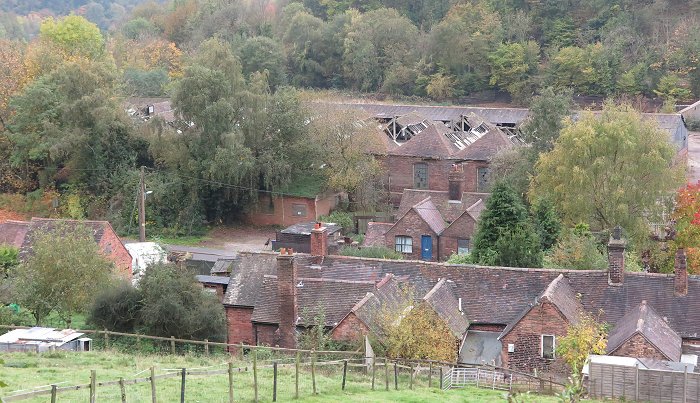
The old Coalbrookdale foundry
site. As seen in October 2019. |
|
He used to lecture at the Coalbrookdale Institution, and on
Tuesday, 9th February, 1882,
gave the first successful demonstration of Swan and
Edison’s incandescent lamps3.
There were seven lamps, which were run from two Parker storage
batteries. The lamps ran for fifteen minutes and provided 20
candlepower, and lit the room nearly as well as the 18 gas jets
that were usually in action.
In June 1882, Paul Bedford Elwell and Thomas Parker jointly
registered a patent for "Improvements in dynamo electric
machines",
and in August they took out another patent for "Improvements in
electric lighting and apparatus associated herewith".
Thomas decided to join forces with Paul-Bedford Elwell, in
Wolverhampton, to form the first company in the Midlands to
manufacture electrical equipment. He left Coalbrookdale in
October 1882 and moved to Wolverhampton.
|
 |
Read
about
Thomas's farewell
to Coalbrookdale |

|
|

|
Return to
the beginning |
|
Proceed to
Elwell-Parker Ltd. |
|
